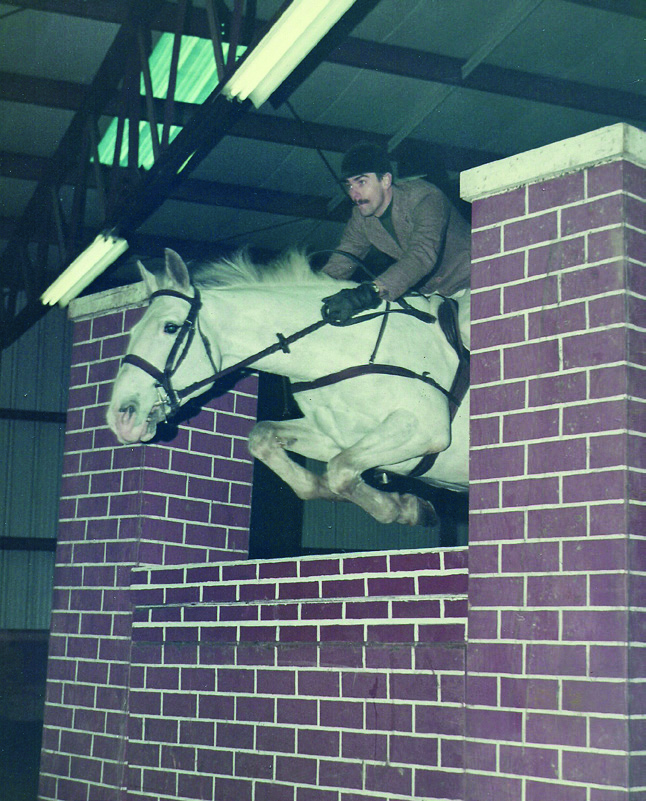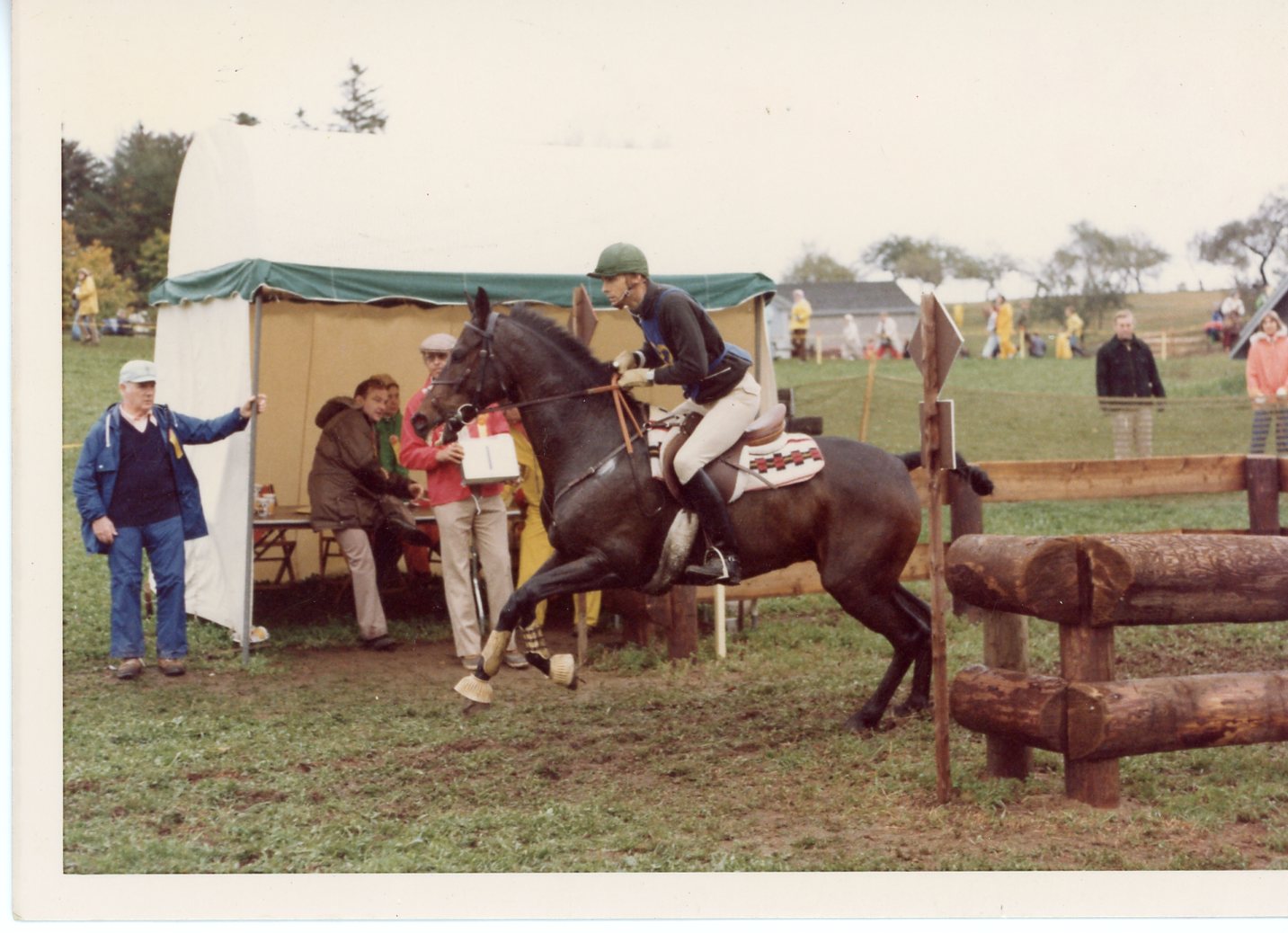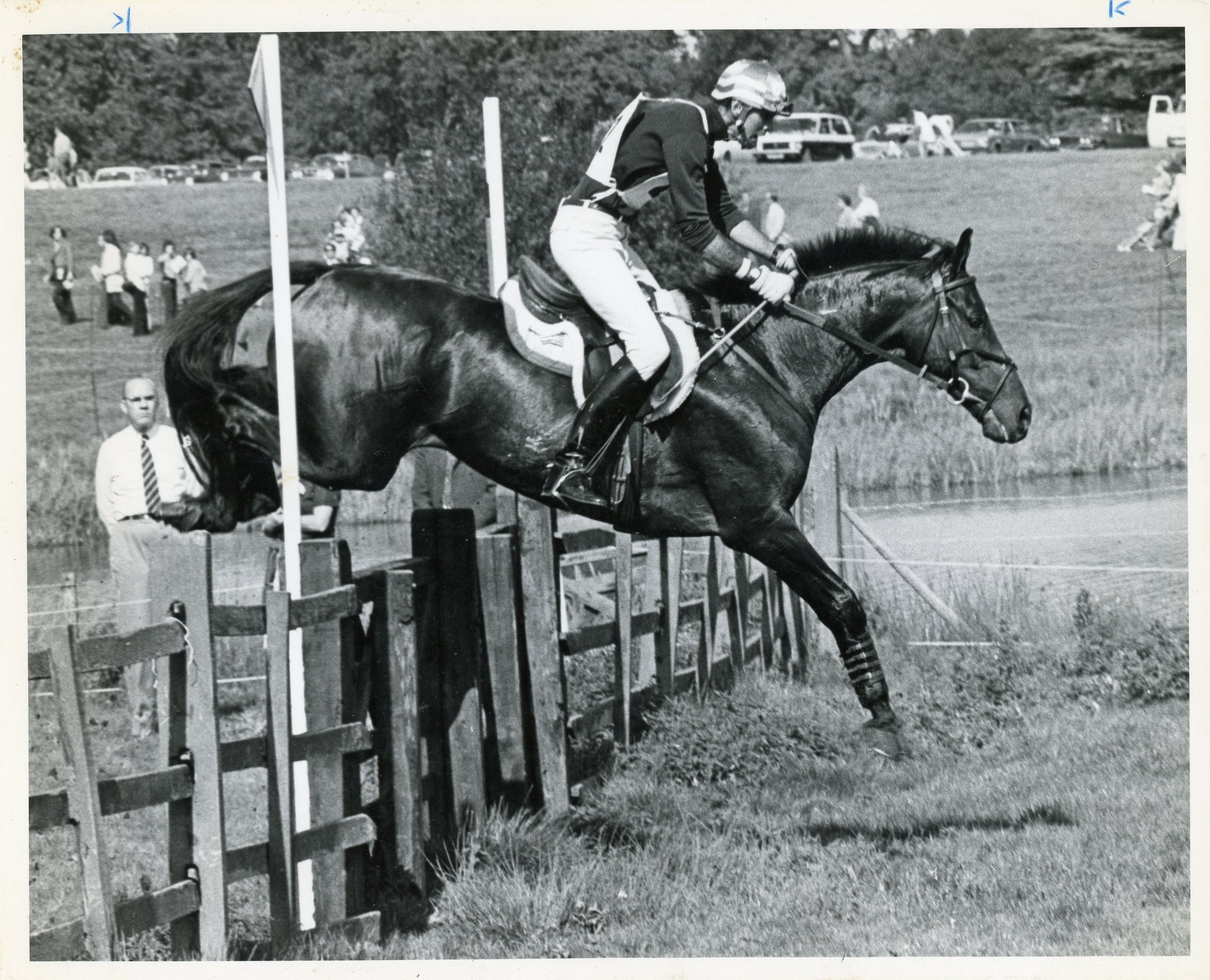
Denny Emerson has been an influential name in the equestrian community for more than 50 years. In 2006, Denny was inducted into the U.S. Eventing Association Hall of Fame for his outstanding achievements as an event rider, which include a team gold medal at the 1974 World Championships. He bases his training programs out of his farms in Vermont and North Carolina and is a popular coach with adult amateurs and professionals alike. A consummate writer, Denny has published many articles and books on his training philosophies.
In his latest book, Know Better To Do Better: Mistakes I Made With Horses So You Don’t Have To, Denny reflects on a lifetime of breeding, training and competing horses in a multitude of disciplines. Throughout the book, Denny includes stories about key horses in his career, how they shaped him as a horseman and what he’d do differently with their training with the knowledge he has now. Excerpted here are vignettes about a pair of Denny’s most famous event horses, Cat and Victor Dakin.
See also: Horse Book Excerpt: How Good Riders Get Good

Cat
Cat was as plain and backyard as horses get when I bought him for $800 in the late ’60s. He’d supposedly been a barrel racer in Oklahoma, and he was scared of quick movements. I once saluted in a dressage test the way men did back then by removing my hunt cap and dropping my arm with the hat, and he spun, so there I was saluting not the judge at letter C but nobody at letter E.
But here are some of the many lessons I learned from having to persevere with a less than “elite” horse because he was the horse I had and the only horse I had.
The first lesson is that if you ride the same horse, day after day, week after week, month after month, year after year, you and that horse are going to know each other so well that despite the fact that you both have failings and insufficiencies, you trust each other well enough to begin to create something bigger and better than either one of you alone.
Next is that most of us tend to “bail out” on a horse that is hard to ride, and one that does not win easily, but if you do not bail out, the talents that may be deeply hidden within both of you may have a chance of being discovered.
On Cat I did my first long-format Advanced event at Dunham, Quebec, in 1971. On Cat I jumped 6 feet in a knock- down-and-out jump-off at a Vermont summer jumper show. I was able to do things on Cat that made it possible, a few years later, to be on a gold-medal USET team at the Burghley, England, World Three-Day Event Championships in 1974 riding Victor Dakin.
I could not have done that on Cat. We were not good enough. But I would not have been able to do that without Cat, and the places in my riding that he allowed me to go. He made me ready for when the chance came.
In Retrospect: What I’d Do Differently with Cat
When you get a horse with an unknown background, you have to be something of a Sherlock Holmes to figure out, by what you see in the horse, what he has previously experienced and what you may need to do to help him recover from that if he has been traumatized in any way. Fifty years ago with Cat, the “barrel racer from Oklahoma,” I simply lacked the insight to know how to help him get over his sometimes almost panicked behavior.
If I had him today, my approach would be to do everything in my power to earn his trust. I would do groundwork, I would do lots of walking under saddle. I would try to get him to stretch, to gently bend, to get him over the idea that a human was an adversary—something like the “lion at the water hole” that wanted to cause him pain.
Cat was typical of so many horses that are scarred from their interactions with humans. Some can be healed more successfully than others, but in all cases, patient, gentle handling is the way forward. I was too inexperienced to know enough about that to help Cat recover.

Victor Dakin
In the early spring of 1973, [my wife] May and I were living in Strafford, Vermont. Our first son, Rett, was 4 months old, and I was a real-estate broker with a small firm called Strafford Associates. We had two horses in the old green barn next to our house, Cat and House Guest, and I had ridden both of them in a few Advanced events, but in terms of being or even becoming an international three-day rider, I wasn’t on anyone’s radar.
It was an okay life. I didn’t get up each morning dreading the day, but neither did I feel particularly excited about my work. Henry David Thoreau famously said something to the effect that “most men live lives of quiet desperation.” I was far from that, but at the age of 31, I felt that there had to be more to life than driving people around to see houses and farms. It was as if I were treading water.
Then one day, out of nowhere, came a letter from Woodstock, Vermont, from a young woman named Jane Schemilt, a student at the Doscher School of Photography up Morgan Hill Road from GMHA (the Green Mountain Horse Association). I had met Jane at various events where she was riding her little plain bay horse, Victor Dakin, but I didn’t know her well, nor had I paid much more than glancing attention to Victor. Jane said in the letter that since she was going to become a full-time medical photographer, she had made the sad decision to sell Victor. Would I be interested in him? Why she wrote me instead of one of many other riders, I do not know. What I do know is that Jane’s letter, and our subsequent decision to buy Victor Dakin, changed the entire trajectory of my life.
During the spring and summer of 1973 I wondered if I made a big mistake because as far as dressage was concerned, I couldn’t, as the saying goes, “ride one-half of him.” Victor was hot, reactive and nervous. When Jane had ridden him in a Canadian team tryout the prior season, the Canadian coach had exclaimed, “This bloody horse can’t canter,” and it was true that in the small confines of a 20-by-60-meter dressage ring, he was explosive.
Forty-three years later, I can’t remember what events I rode him in first, but in September of 1973, Neil Ayer (the President of the U.S. Combined Training Association) was putting on the first Ledyard International Three-Day Event, in Wenham, Massachusetts, and had actually paid the air transport so that top European riders would come to compete there.
I entered Victor, largely unprepared, lacking in all sorts of riding skills, but fueled by the conviction that it was pretty much now or never. I was, I now realize, in over my head in some ways, but Victor’s strengths largely made up for my failings.
I made the mistake on cross country of “hand riding” Victor, trying to set him up in front of his jumps, instead of attacking them and letting Victor set himself up, and we had two refusals on the course. But we finished. And we now had an entire winter to get to know one another before a series of World Championship selection trials to be held in the spring of 1974 to select six riders to train in England with the new USET coach, Jack Le Goff, prior to the World Championships at Burghley in September.
See also: Silverbacks of the Sport
All that cold winter of 1973 and 1974, I boarded Victor at Huntington Farm, a couple of miles up the road in Strafford, and we plugged away in that dark, cold 60-by-120-foot indoor ring. But when it is 10 below zero outside, with 3 feet of snow on the level, that ring seemed huge and warm by comparison.
When May and Victor and I headed south in May and June to try to make the USET squad of nine riders to train at the new headquarters on Bridge Street in South Hamilton, Massachusetts, I had learned the single most critical thing about how to ride Victor over jumps. I had to trust him, ride him forward, keep my leg on, stay out of his way and he would explode off the ground in all his attack mode. For the next five years, Victor never had a refusal on any cross-country course in the world.
Because we had been consistent at the selection trials, I was one of nine riders to be invited for a month or so of training at the USET, at the end of which Jack Le Goff would choose six of us to get on the plane to England. Eventually, four would make up the actual team, and the other two would ride as individuals.
The original nine were the two veterans, Mike Plumb and Bruce Davidson, plus Beth Perkins, Caroline Treviranus, Don Sachey, Roger Haller, Tad Coffin, Lornie Forbes and myself.
I had few illusions. I was married with a full-time job and a son. I was absolutely not what Jack wanted, someone to live at the headquarters in South Hamilton under his constant direction, the way we associate with professional athletes in sports like baseball and football. I figured that I was ninth out of nine, and that I had four weeks to prove that, like the line in the Beatles’ song, we had “a ticket to ride.”
We continued to struggle in dressage, but Victor Dakin was proving to be a jumping machine. I didn’t have all the skills that I later learned, but if
I left it up to him, Victor would attack the cross country and leave the rails in their cups in show jumping.
We got on the plane. In England, Victor’s jumping was consistently perfect, and we were chosen to be one of the four members of the American team. Victor jumped a clear cross-country round, and he was one of the three U.S. horses whose final results gave us a gold medal. I remember Prince Philip handing me my medal and saying, “Well done, boys.”
The impossible had become improbable, the improbable had become possible, and the possible had become reality. From that day forward, I could make my living in the horse business, so totally can a gold-medal horse change your life.

In Retrospect: What I’d Do Differently with Victor Dakin
Victor Dakin, much like Cat, was afraid of flatwork. I had been told that one of the reasons that Victor’s previous rider had not been chosen for the Canadian Olympic squad was that the coach did not like Victor.
Just as I now realize what I should have done with Cat, I should also have tried the same tactics with Victor Dakin—that is, all sorts of strategies to try to win his confidence and alleviate his almost claustrophobic fear of being placed between the driving aids and the restraining aids.
I think my approach would have been hours of walking, trying to get him to stretch and bend without fear of force or coercion.
“You don’t know what you don’t know.” I would get frustrated by Victor’s tension and resistance, and, in my ignorant frustration, would then respond with equal tension, not knowing that I was only making matters worse.
Adapted from Know Better To Do Better: Mistakes I Made With Horses So You Don’t Have To by Denny Emerson. Reprinted with permission of Trafalgar Square Publishing. Hardcover, 252 pages, $24.95. The book is available for purchase at www.EquineNetworkStore.com. Use the code PRAC15 to receive 15 percent off your entire order.
This article was originally printed in the Winter 2018 issue of Practical Horseman.










